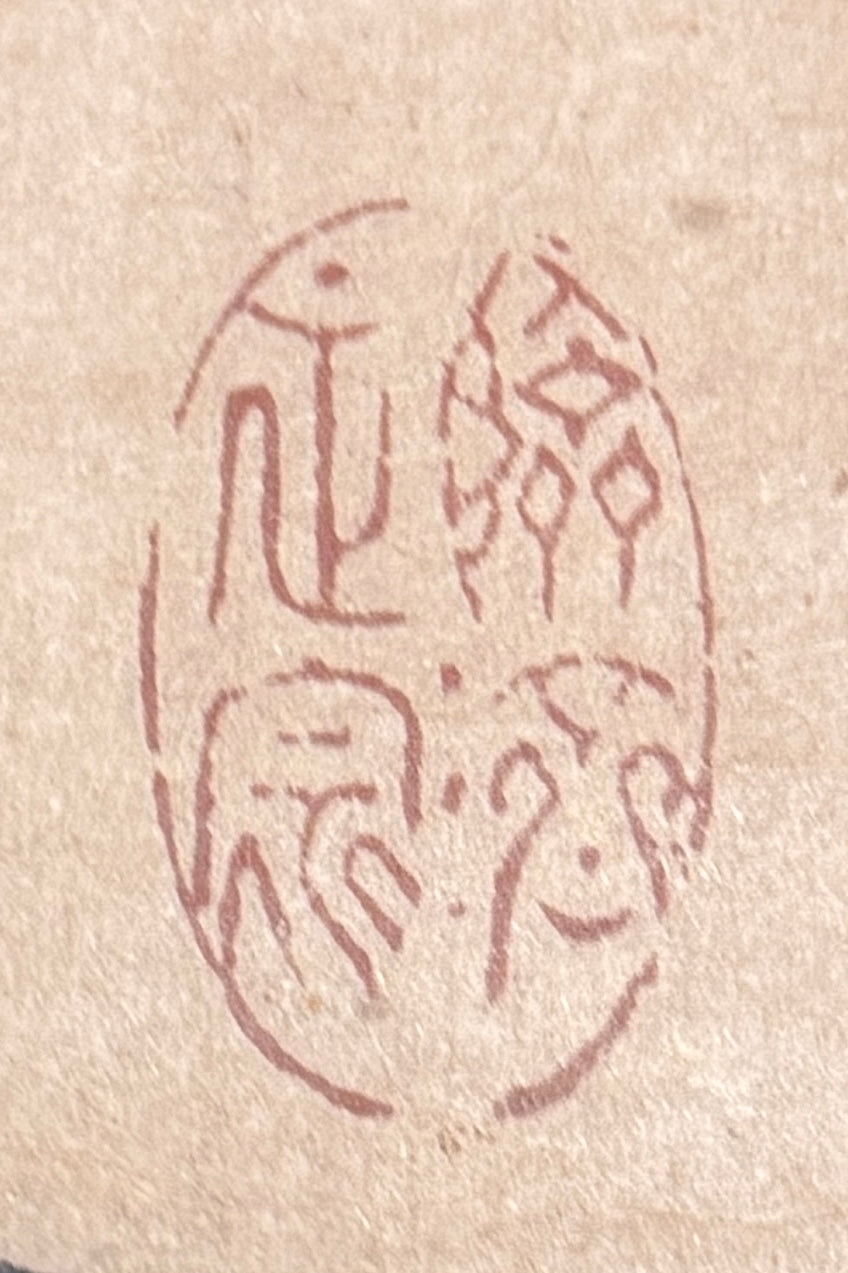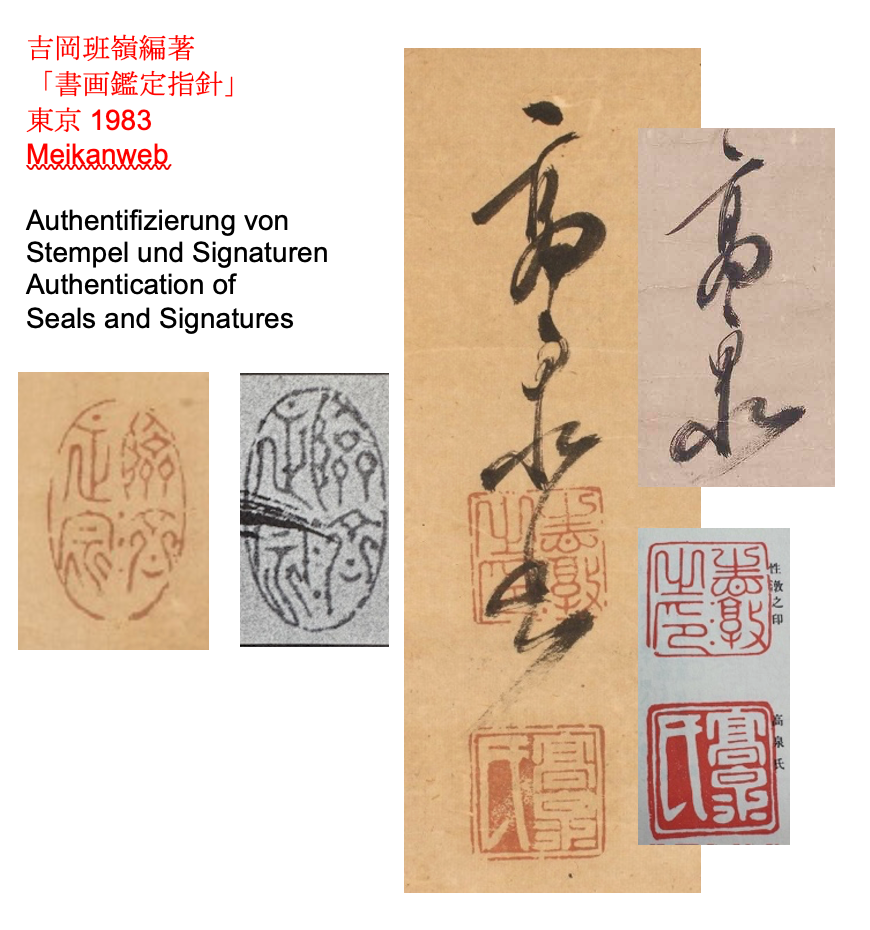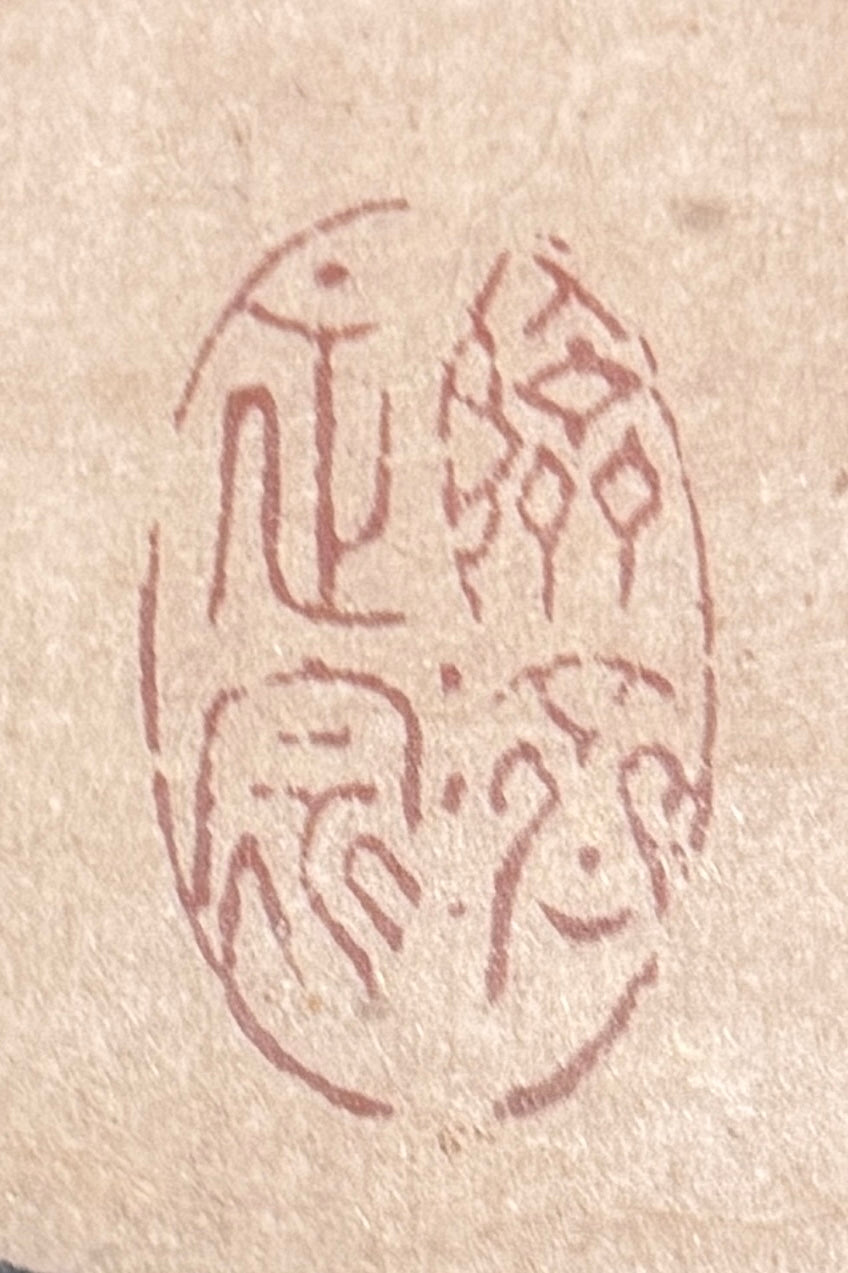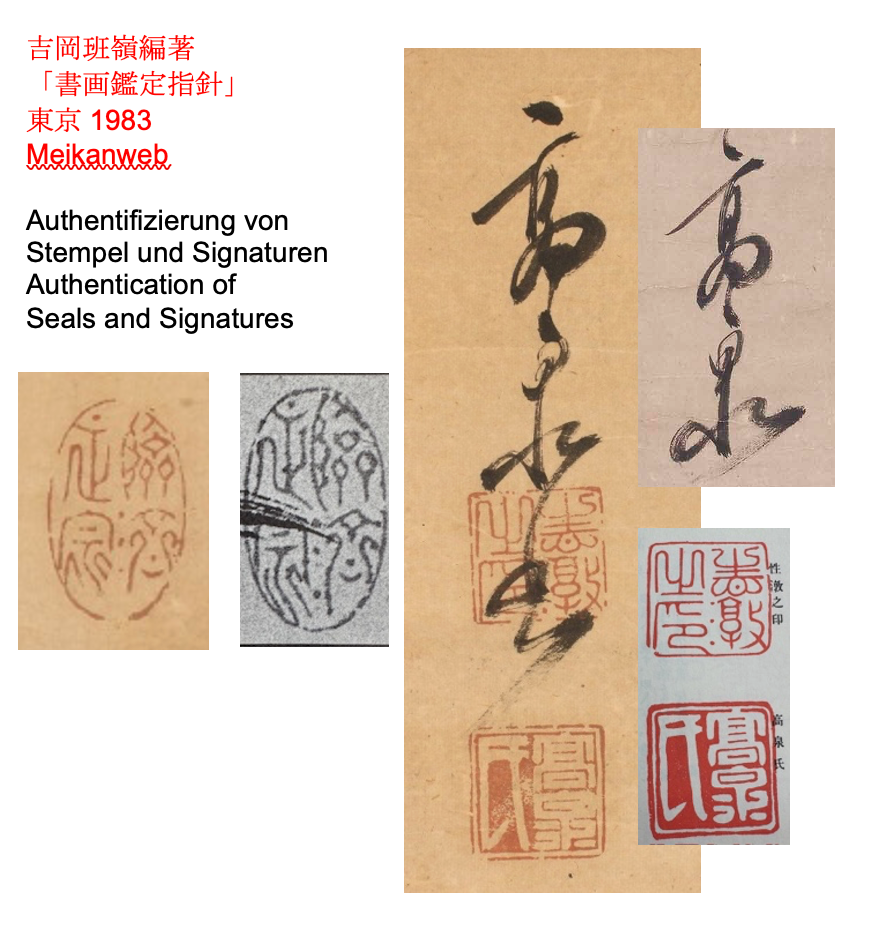Guignard Kyoto Collection
Calligraphy Cloud 雲-山高無礙白雲飛 | Kōsen Shoton 高泉性敦 | 1633-1695
Calligraphy Cloud 雲-山高無礙白雲飛 | Kōsen Shoton 高泉性敦 | 1633-1695
Couldn't load pickup availability
Kōsen Shoton was one of those refugees from the Chinese intelligentsia who found refuge in Kyoto in the mid-17th century. They were allowed to build a temple according to their own rules—the Manpukuji, even today, exhibits a different structure than Japanese temple architecture. This group of Chinese refugees was well-disposed toward, as they brought new ideas, especially in calligraphy, which were enthusiastically accepted and passed on by the Japanese.
One type of calligraphy that Chinese priests brought to Japan is an image of a dominant character on the right, which is the first character of the smaller lines on the left. In this calligraphy, it's the character for cloud. Zen monks love the phenomenon of the free-floating, constantly changing cloud, in contrast to immobile mountains. The full text reads:
“Despite the (high) mountains, the white cloud flies free”
This explains the free, unhindered flow of the brushstroke. However, the character for cloud itself does not convey the sense of freedom. In print, it consists of twelve individual strokes 雲 , making it quite complex.
It consists of an upper half, meaning "rain 雨 , " and a lower half, meaning "blessing" 云. If one concentrates not on the line of poetry, but only on the large cloud symbol, one could interpret its meaning (meteorologically correctly!) as: "The cloud tells us rain." However, with this particular calligraphy, one could also be tempted to a more graphic-formal interpretation of the symbol, which goes beyond the meaning of the line of poetry: The upper part is perceived in its free, wild intricacy, as an active moment of a rainfall—the lower part would then be graphically nothing more than a horizontal base (clearly and forcefully painted this way by the calligrapher), i.e., the part 云 stops the rain 雨 from falling—in other words: "The cloud disappears when the rain falls." From this perspective, movement and stillness are both graphically contained in the symbol of the cloud, and this is ultimately an overcoming of duality, which is what Zen thought strives for at its core.












